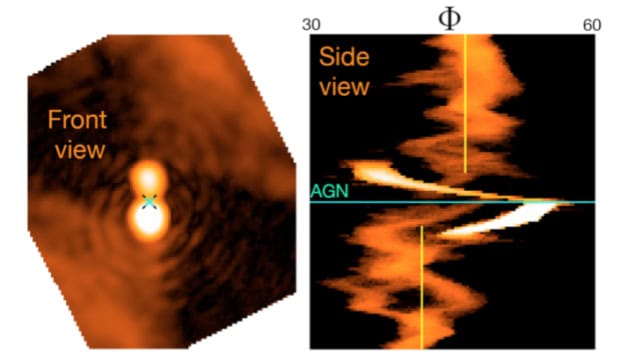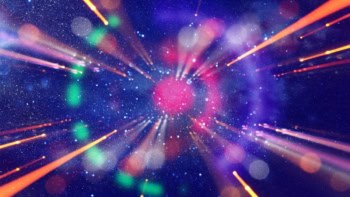
A new imaging technique that takes standard two-dimensional (2D) radio images and reconstructs them as three-dimensional (3D) ones could tell us more about structures such as the jet-like features streaming out of galactic black holes. According to the technique’s developers, it could even call into question physical models of how radio galaxies formed in the first place.
“We will now be able to obtain information about the 3D structures in polarized radio sources whereas currently we only see their 2D structures as they appear in the plane of the sky,” explains Lawrence Rudnick, an observational astrophysicist at the University of Minnesota, US, who led the study. “The analysis technique we have developed can be performed not only on the many new maps to be made with powerful telescopes such as the Square Kilometre Array and its precursors, but also from decades of polarized maps in the literature.”
Analysis of data from the MeerKAT radio telescope array
In their new work, Rudnick and colleagues in Australia, Mexico, the UK and the US studied polarized light data from the MeerKAT radio telescope array at the South African Radio Astronomy Observatory. They exploited an effect called Faraday rotation, which rotates the angle of polarized radiation as it travels through a magnetized ionized region. By measuring the amount of rotation for each pixel in an image, they can determine how much material that radiation passed through.
In the simplest case of a uniform medium, says Rudnick, this information tells us the relative distance between us and the emitting region for that pixel. “This allows us to reconstruct the 3D structure of the radiating plasma,” he explains.
An indication of the position of the emitting region
The new study builds on a previous effort that focused on a specific cluster of galaxies for which the researchers already had cubes of data representing its 2D appearance in the sky, plus a third axis given by the amount of Faraday rotation. In the latest work, they decided to look at this data in a new way, viewing the cubes from different angles.
“We realized that the third axis was actually giving us an indication of the position of the emitting region,” Rudnick says. “We therefore extended the technique to situations where we didn’t have cubes to start with, but could re-create them from a pair of 2D images.”
There is a problem, however, in that polarization angle can also rotate as the radiation travels through regions of space that are anything but uniform, including our own Milky Way galaxy and other intervening media. “In that case, the amount of radiation doesn’t tell us anything about the actual 3D structure of the emitting source,” Rudnick adds. “Separating out this information from the rest of the data is perhaps the most difficult aspect of our work.”
Shapes of structures are very different in 3D
Using this technique, Rudnick and colleagues were able determine the line-of-sight orientation of active galactic nuclei (AGN) jets as they are expelled from a massive black hole at the centre of the Fornax A galaxy. They were also able to observe how the materials in these jets interact with “cosmic winds” (essentially larger-scale versions of the magnetic solar wind streaming from our own Sun) and other space weather, and to analyse the structures of magnetic fields inside the jets from the M87 galaxy’s black hole.

Metasurfaces make a single-shot polarization imaging system
The team found that the shapes of structures as inferred from 2D radio images were sometimes very different from those that appear in the 3D reconstructions. Rudnick notes that some of the mental “pictures” we have in our heads of the 3D structure of radio sources will likely turn out to be wrong after they are re-analysed using the new method. One good example in this study was a radio source that, in 2D, looks like a tangled string of filaments filling a large volume. When viewed in 3D, it turns out that these filamentary structures are in fact confined to a band on the surface of the source. “This could change the physical models of how radio galaxies are formed, basically how the jets from the black holes in their centres interact with the surrounding medium,” Rudnick tells Physics World.
The work is detailed in the Monthly Notices of the Royal Astronomical Society



